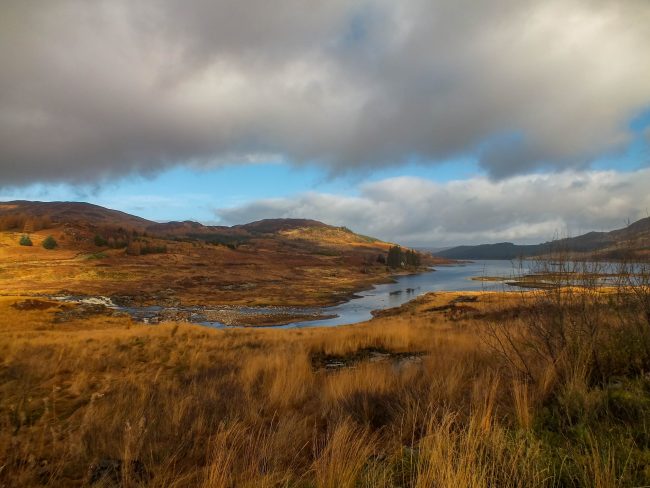
Following recent rain I was back up at Loch Doon today to continue our pH monitoring on a number of the tributaries that enter the loch. A couple of our monitoring sites require a walk out across some rough, tussocky hills. Everyone else in the office suddenly had full diaries today, I suspect as the Trust’s resident hill walker this type of thing falls under my remit. Carrick Lane falls looking down Loch Doon. Carrick Lane in autumnal sunshine. Our pH monitoring is helping us develop our understanding of how pH fluctuates with water levels, times of year etc. Burns may have a fairly neutral pH at normal flows but can become more acidic with increased water levels, or with alterations in land use e.g. forestry being felled. Monitoring the pH at a variety of flow heights and times of year allows us to more fully understand the potential impacts to fish. Salmon eggs are generally less able to cope with low pH and acidic flushes than trout eggs are. However there is a point where if eggs are exposed to very acidic water (typically when pH drops below 4.5) the outer shell hardens and the alevin inside cannot ‘burst’ the outer casing…
Source: Ayshire River Trust – Loch Doon tributary pH monitoring
